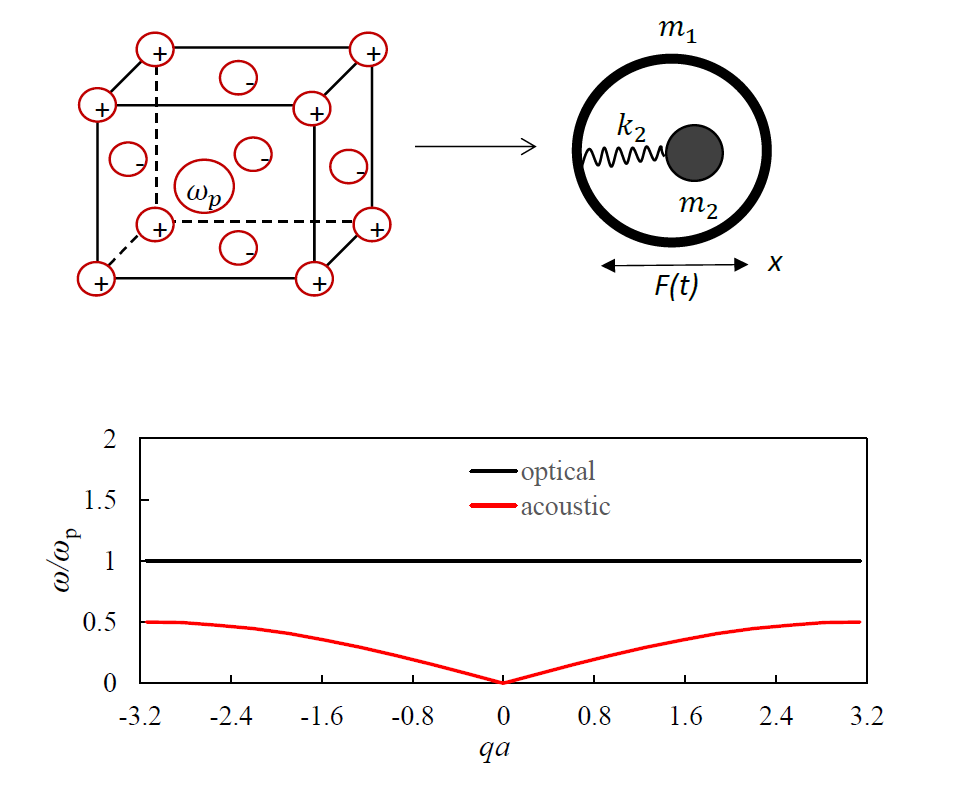We report the negative effective mass metamaterials based on the electro-mechanical coupling exploiting plasma oscillations of a free electron gas. The negative mass appears as a result of vibration of a metallic particle with a frequency of ω which is close to the frequency of the plasma oscillations of the electron gas m_2 relatively to the ionic lattice m_1. The plasma oscillations are represented with the elastic spring k_2=ω_p^2 m_2, where ω_p is the plasma frequency. Thus, the metallic particle vibrated with the external frequency ω is described by the effective mass m_eff=m_1+(m_2 ω_p^2)/(ω_p^2-ω^2 ) , which is negative when the frequency ω approaches ω_p from above. The idea is exemplified with two conducting metals, namely Au and Li embedded into various matrices. The one-dimensional lattice built of the identical metallic micro-elements m_eff connected by ideal springs k_1 representing various media such as polydimethylsiloxane and soda-lime glass is treated. The optical and acoustical branches of longitudinal modes propagating through the lattice are elucidated for various ratios ω_1/ω_p . The 1D lattice built of the thin metallic wires giving rise to the low frequency plasmons is treated. The possibility of the anti-resonant propagation, strengthening the effect of the negative mass occurring under = p = 1 is addressed.

